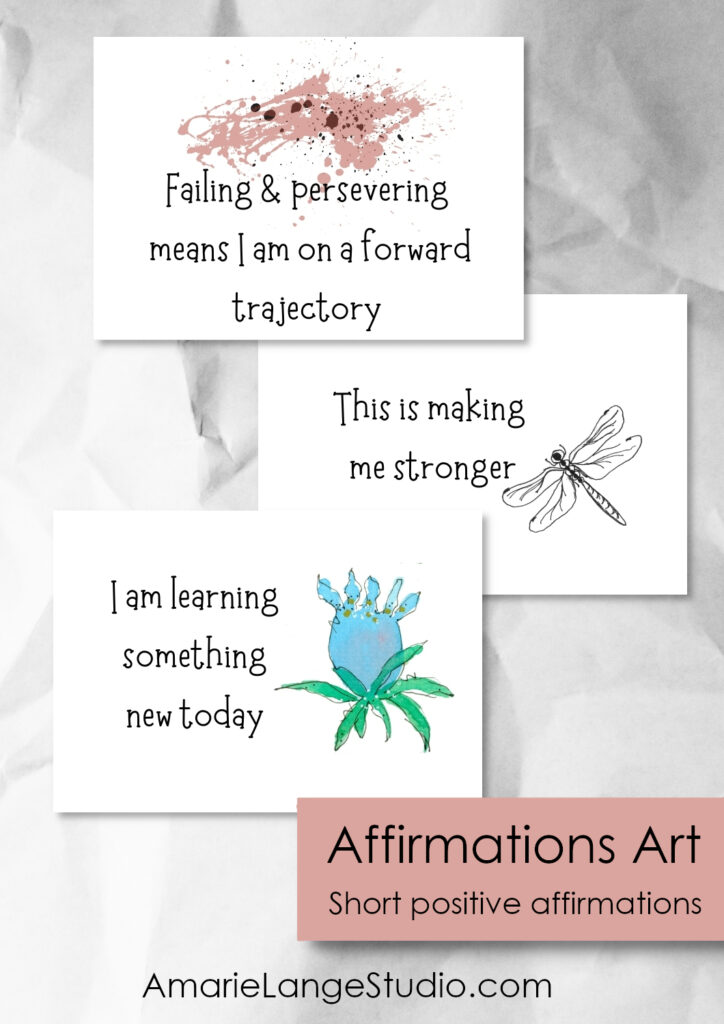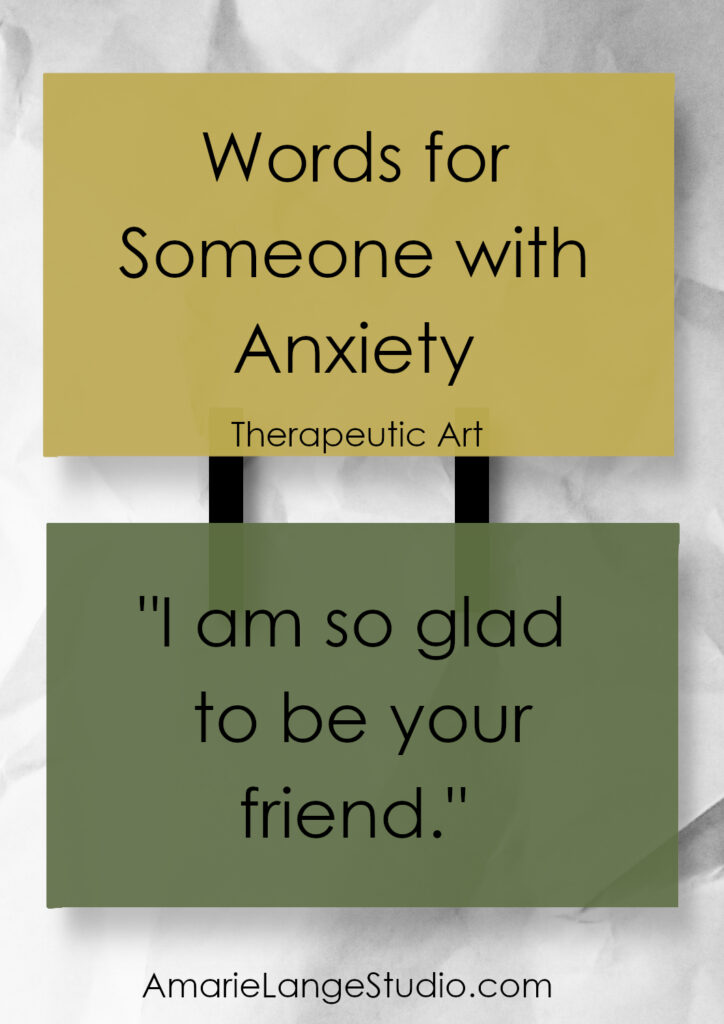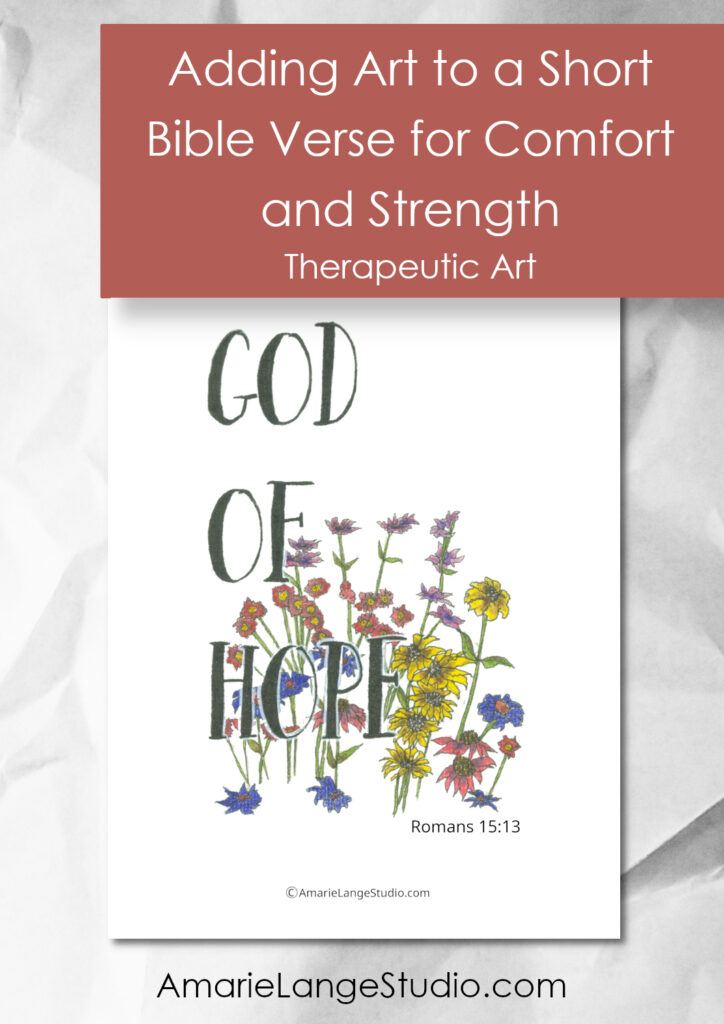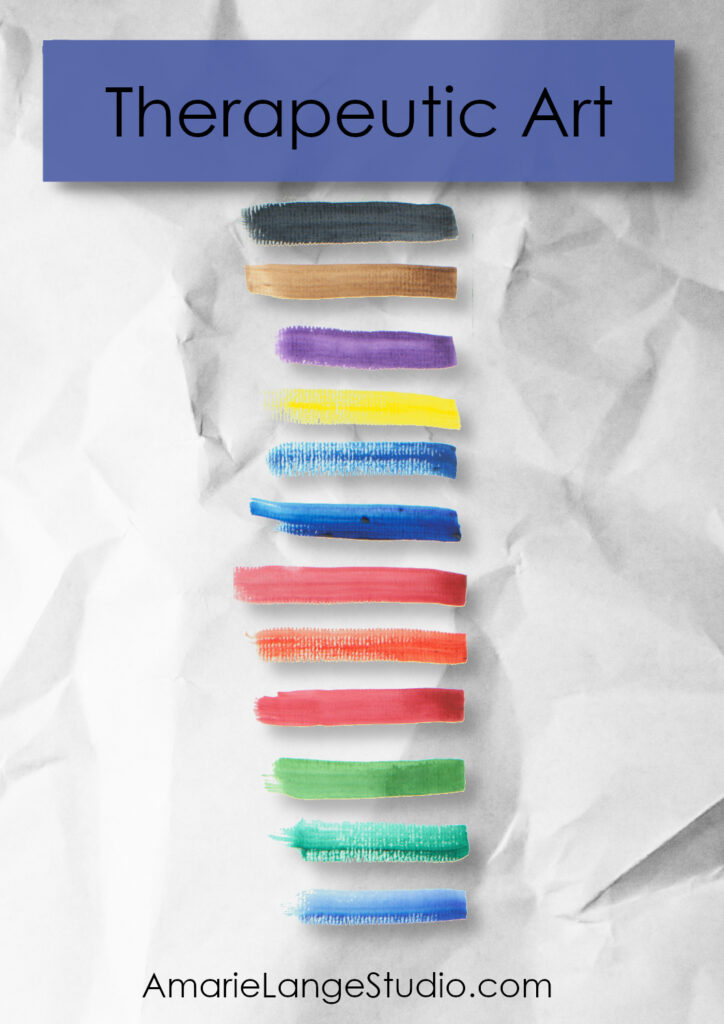
I am a certified therapeutic art life coach. What does that mean?
That does not mean I am an art therapist, first of all. I am not among the genre of mental health professionals. It’s important to state that upfront. I am an artist who has also had to learn to manage anxiety throughout my life and combining creative arts with personal growth has become one of my strengths.
Personal growth art. It’s a real thing.
By putting some sort of artistic or creative expression together with mental health, the best of both worlds can arise.
I help myself – and by extension others – use the visual arts to bring about good things – and hopefully improve our quality of life.
As the saying goes, it’s a journey.
In this post we’ll explore a few of the (infinite) ways a person might do just that.
Affirmations Art
Affirmations art is just what it sounds like; the process of combining the positive effect of affirmations with art media.
If you are a licensed art therapist, you can offer art therapy sessions to your clients.
As a certified therapeutic art life coach, I can use art materials to help people of all ages to express their positive or negative emotions to gain personal insight into their inner thoughts and inner experiences.
It’s well known that using positive affirmations with intent over time can really help with cognitive functions.
Want to make that reward pathway even better? Try adding therapeutic artwork activities to the mix.
Therapeutic art making, in this case, might mean simply adding color or drawing to an affirmation written on a card.
One could also write the affirmation out by hand, connecting the brain and the hand movements, and adding the doodles that naturally flow to the text.
Although beyond the scope of this post, affirmations can also be a part of dance therapy or music therapy.
Tailoring affirmations to your own needs is an excellent way to help enhance their positive effect.
For example, affirmations for anxiety, might focus on a particular topic, such as social skills or the needs of cancer patients.
Let’s explore further therapeutic art-making.
Short Positive Affirmations
One thing I love about short positive affirmations is how easy it is to personalize them for exactly what I’m working on at the moment.
Current research is confirming that human beings can actively use affirmations to change their brains.
That’s such great news!
Use of art therapy is a great way to help with this therapeutic process.
I can write up short positive affirmations that reflect the new thoughts I’m working on.
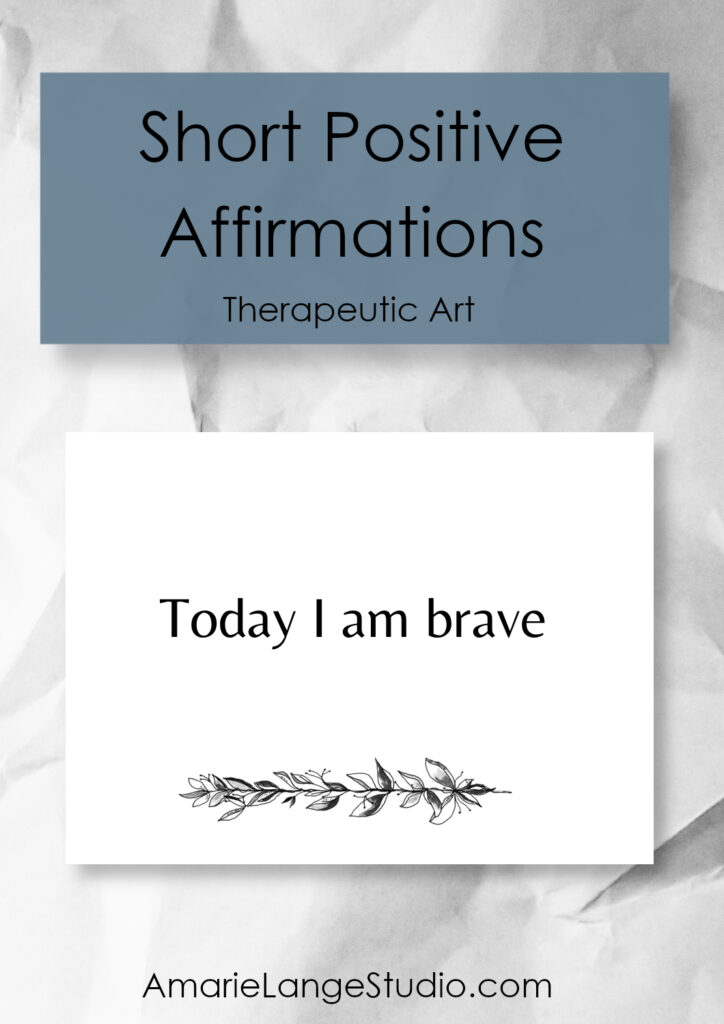
Then I can add my name to each affirmation, personalizing it and thinking deeply about that personal insight.
Plus I can consider how I’m feeling as I do this process and start to add color to the affirmation card. For me, doing this helps express the depth and quality of my emotion in the moment. That expression helps to release that emotion for me and this active art-making allows me to better understand myself.
A licensed art therapist might help me explore that further, but sometimes all I really need in the moment is to be able to identify how I’m feeling and express it through my own words and art therapy activities.
Words For Someone with Anxiety
If you’re someone who doesn’t struggle with anxiety, it can be hard to know what to say when a friend or loved one does.
Here is a post (click on the graphic below) with several thoughts to share along with graphics if you need to share online.
Simple words for someone with anxiety and honestly, just the sharing will let the person know you care. That’s worth a lot.
How to Use Watercolor Clipart to Make Printable Journal Pages
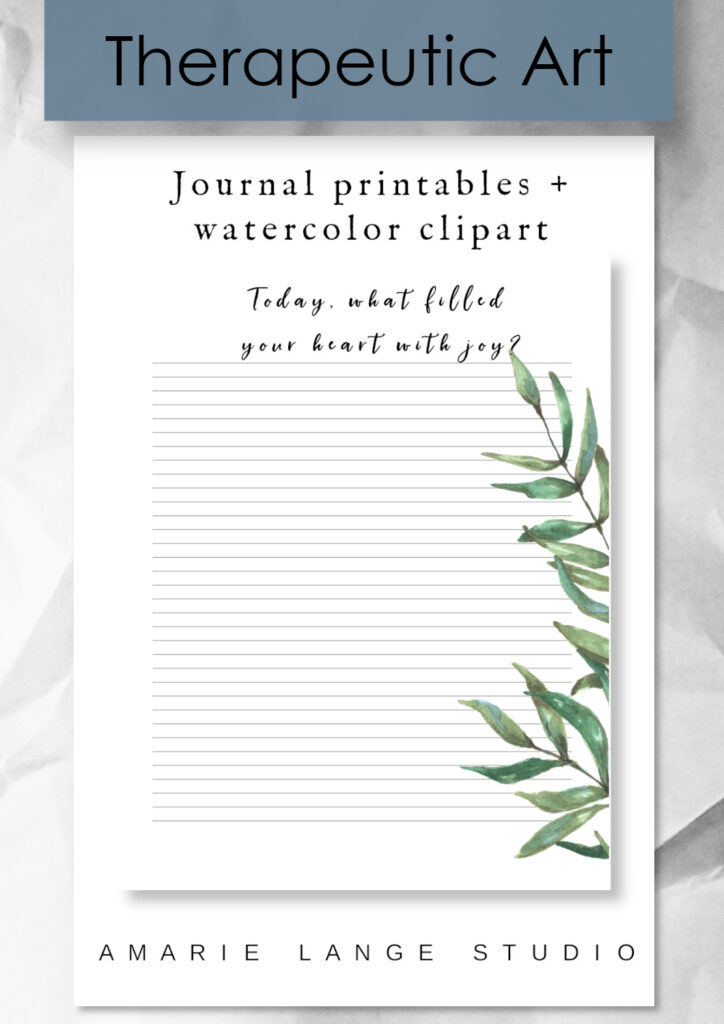
A good place to keep all those affirmations is in a journal.
Adding watercolor clipart to printable journal pages makes your journal even more yours.
Instead of watercolor paint you can use colored pencils, markers, or simply pencil or ink to doodle.
Draw what you’re feeling, whether it’s actually a scene or a person or just shapes and concepts.
It’s your journal and it’s therapeutic on so many levels!
Habit Tracker Printable
Another way to make a positive affirmation habit even better is to track or log your affirmation usage.
A habit tracker printable that you personalize with your name or feelings or amount of times you’ve said an affirmation each day will give you a visual tracker of how you’re progressing which can be very encouraging.
Add colors to your tracker (there’s the art part) to increase your ability to see-at-a-glance where you are in your habit for the month (or week or whatever time slot you’re using).
You can also doodle around the tracker to help you remember what you were feeling on different days or hours. This can show you patterns of emotions which is super helpful.
Or if you find that you think more about saying your affirmations than you actually do (that’s me, right there) a habit tracker will reveal that and you can make adjustments to improve.
No pressure. Just personal growth. At your pace. With art helping you along.
How to Paint Your Emotions
At some point someone always asks how to paint your emotions.
Great question!
The answer is…in lots of ways.
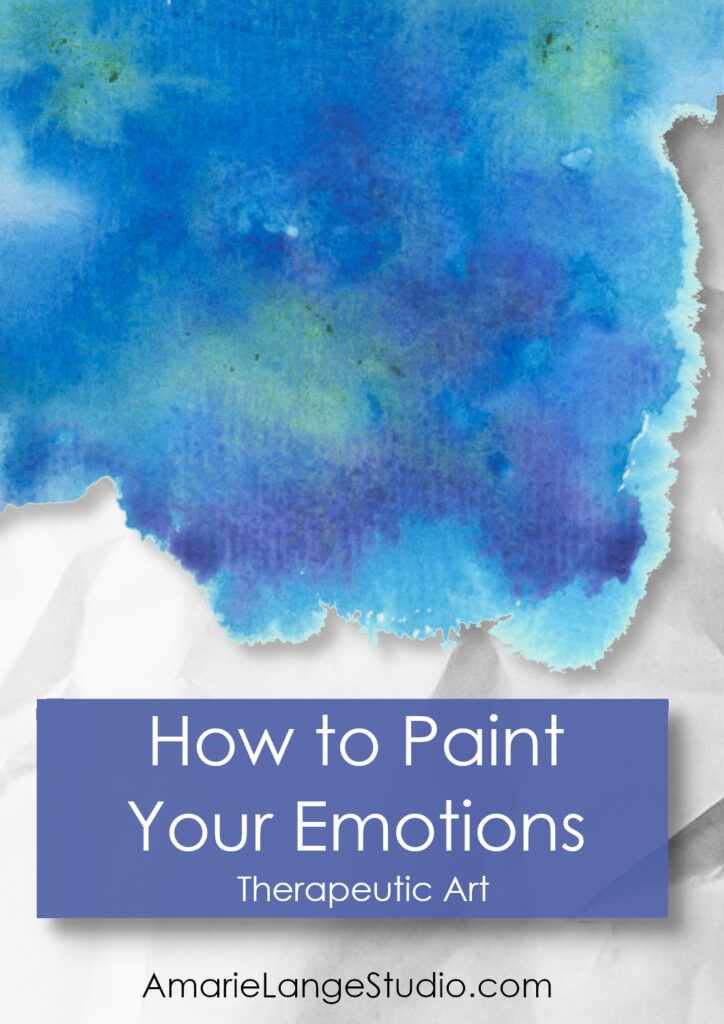
There are no rules here and that’s important to remember. When a person is trying to get in touch with their feelings and emotions and turns to therapeutic art practices as a part of that process, it’s important to have the freedom to use the tools and methods that feel as comfortable as possible.
If you’ve never picked up a paint brush in your life, you’re probably going to have a bit of trepidation. That’s ok! Give yourself grace and permission to try out a few things with no judgment.
Do you have a favorite color? Start there.
Do you already feel like a certain color? Go with that for starters.
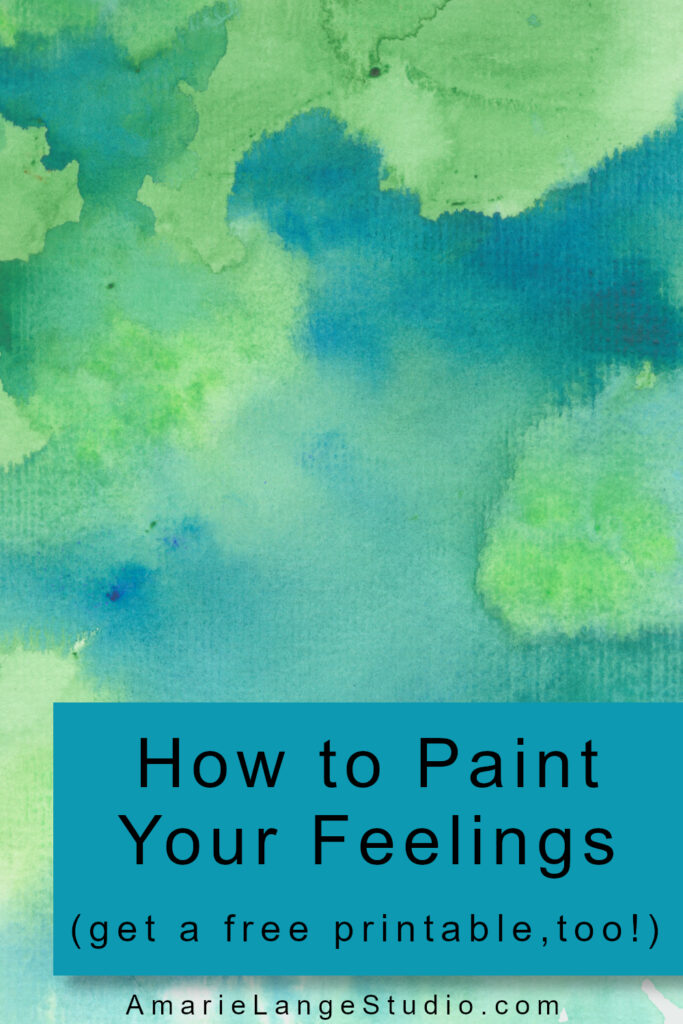
Just start drawing or painting (doodling is perfect) and go with where your mind and hand takes you.
Honestly give yourself some time for this. Once, twice, three times is just getting started.
Try putting on some music or listening to an audio book you enjoy.
You can be in a group or by yourself.
This topic lead into the next one, too.
Feelings Wheel Printable – Therapeutic Art Tool
Sometimes expressive arts therapy is truly simple.
Tools like a feelings wheel printable are popular right now and for good reason.
They are an easy yet effective way to visually see emotions and how they work in your body or mind.
Adding art through color or design to these excellent tools supercharges them.
My experience in using these types of mental health resources is that I need to try a variety to find the handful that work best for me.
The other thing to remember is that artistic expression isn’t always about producing art that you feel is of a particular quality.
In other words, you’re not (necessarily) trying to produce a great work of art through the use of art therapy.
You’re trying to gain greater insight into your own emotions and thinking processes and sometimes even how that information connects with your body.
The beautiful thing for me is that this process can also help a person fall in love with artistic expression leading to a life long love of not just art therapy sessions but of all the creative arts!
Benefits of Sewing
Building on the last idea I’m going to introduce more ideas that are outside of the visual arts. I mentioned dance therapy and music therapy earlier, but let’s talk a bit about textile therapy.
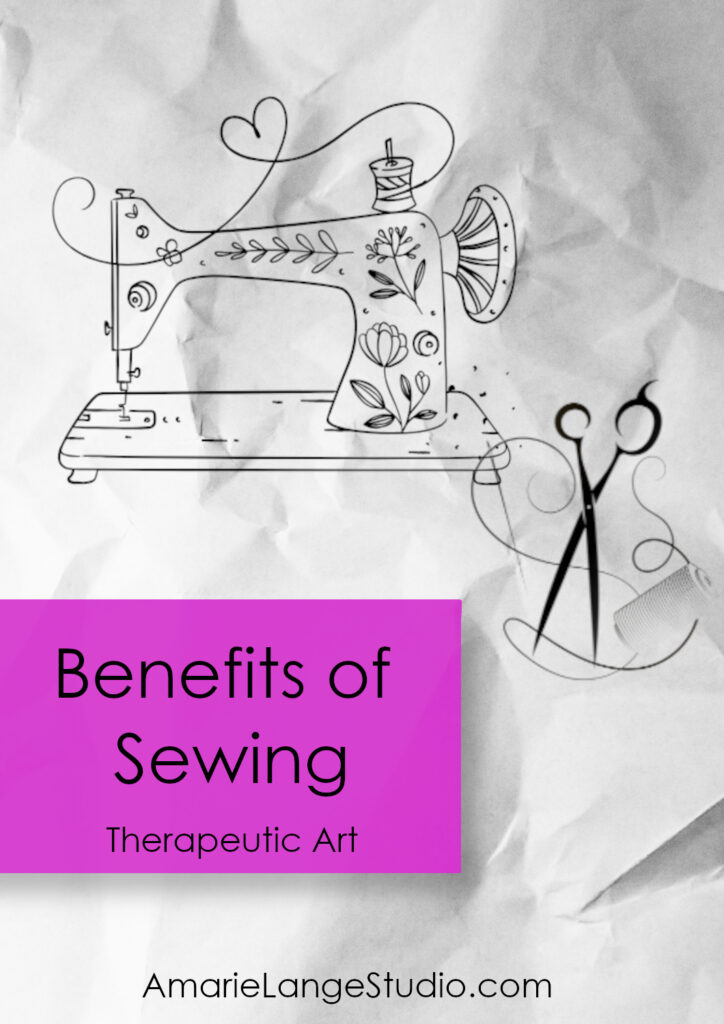
Textile therapy is also a wide genre, including but not limited to, the benefits of sewing for mental health, knitting and crocheting, leather working, embroidery and so much more.
I am a sewist and I can tell you firsthand that sewing is an excellent creative expression for therapeutic art.
The combination of using my hands in detailed, precision work, producing something useful and often helpful, and the finished product also having a beauty all its own is deeply therapeutic.
Combine all this wonderfulness with diverse communities of other sewists and you have a very good thing indeed!
So I encourage you to think a bit out of the box as you consider the term art therapy.
Meditative Painting
Let’s switch gears a bit with meditative painting.
I’m also a watercolorist and watching watercolor flow effortlessly into the pools of water I prepare for it is mesmerizing and calming.
Not to mention, ridiculously beautiful. Even the first time you do it.
Using watercolor to paint meditatively means to enjoy that in-the-flow moment.
Once you let go of the need to create a painting you can sell, you are released to simply be in the moment with the colors and movement of the paint.
As you paint you start to see your mind expressing itself in terms of color selection, shapes, shading or light, etc.
A great thing to know about this process is that it works perfectly with pre-done line artwork.
Like coloring pages. Doodling. Neurographic art.
I found this great beginner friendly video on meditative painting I want to share with you. She is painting the sounds she hears around her. A great way to get in touch with what your body is experiencing which often gets ignored in the bustle of everyday life.
Painting feelings may feel different or difficult at first and that’s ok. Give yourself time and space to explore this new way of connecting with yourself.
Adding Therapeutic Art to a Short Bible Verse for Comfort and Strength
Bible verses are the ultimate short positive affirmation.
Just like using any other affirmations, add art through coloring, doodling, or coloring the text.
Scripture is powerful if you let it be. It is extremely meditative and can reveal where changes need to be made. Again, using a printable log tracker of some sort can be quite helpful with this therapeutic art approach.
Art As a Stress Reliever
This brings us full circle to what we’ve been exploring in this post. Art as a stress reliever but even more. Art as a therapeutic process and a psychological theory that can be applied to specific therapeutic goals, help teach how to live in the present moment better, and positively impact the lives of individuals.
Talk therapy is great, but the effectiveness of art therapy doesn’t depend on someone’s skill level with the medium. It’s a fantastic creative outlet where the final product is evaluated by the artist themself. Do they feel better? Do they feel more at peace? Have they released some of the challenging feelings they’ve been struggling with? Have they connected with themselves – and maybe the people who are engaged in these creative activities with them?
These are the questions that matter. It is a wonderful thing to be able to set down your sense of overwhelm for a bit. Does therapeutic art bring significant improvement? Sometimes. Usually it’s a part of a bigger process of combining an art therapy technique and verbal communication like talk therapy or group therapy.
Therapeutic art is also an excellent thing to do as a fun activity on a rainy day. You can choose whatever kind of drawing utensil you have, doodle a bit, fill it in with markers and enjoy a sense of time drifting away.
Emotional and physical well-being is worth learning some new skills. I hope you take a few basic art supplies and enjoy the creative processes inherent in therapeutic art.
